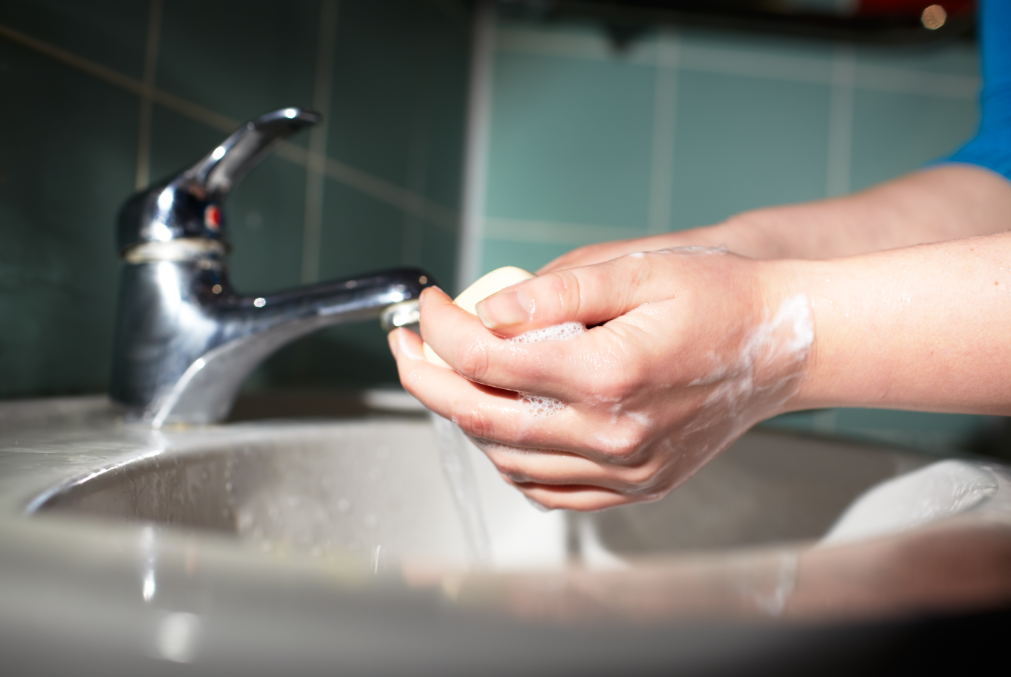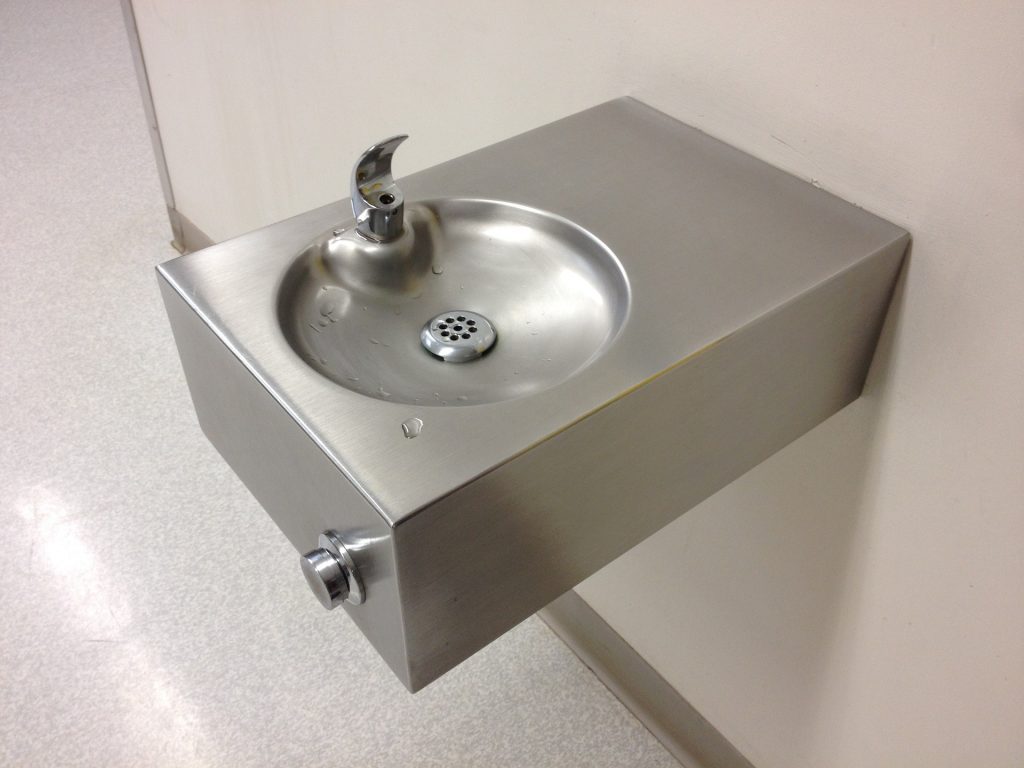Why wash your hands?
Clean hands are the first line of defense against the spread of germs in work environments, and handwashing is an easy and inexpensive way to keep employees healthy.

Human and animal feces are both sources of germs like Salmonella, E.coli O157, and norovirus which can cause diarrhea and respiratory infections. These organisms can get onto people’s hands when using the toilet, changing diapers, handling or petting animals, or when preparing raw meats. They can also be transferred to shared work surfaces when people don’t properly wash their hands.
Germs at Work

It is important to remember to wash your hands—especially when you are at work! Regardless of your occupation, there are many common “red flag” surfaces in workplace settings including:
- Door handles, push bars, and keyless entry locks
- Break room furniture, counters, sinks, microwave ovens, coffee makers and refrigerators
- Computer keyboards and shared workstations
- Copiers
- Bathroom fixtures
- Water fountains
- Stair railings
- Trash cans
- Vehicle interiors (steering wheel, controls, knobs, handles, etc.)
When to Wash Your Hands at Work
Since you never know if or when your hands might have come in contact with germs at work, be sure to wash them:
- Before and after preparing or eating food
- After using the toilet and before exiting a restroom
- After blowing your nose, coughing or sneezing
- After shaking hands with someone you suspect is ill
- Before and after treating a cut or wound
- After touching garbage
Steps to Proper Handwashing
- Wet your hands with clean, running water (warm or cold), turn off the tap, and apply soap.
- Lather your hands with the soap by rubbing them together. Make sure to get both sides of your hands and wrists, between all fingers, and around/under your fingernails.
- Scrub for at least 20 seconds.
- Rinse hands well under clean, running water.
- Dry hands using a clean towel or air dryer.
- If possible, use a paper towel to open the door when leaving the restroom.
- If soap and running water are not available, use an alcohol-based hand sanitizer that contains at least 60% alcohol.
|
Wet
hands. |
Apply
soap. |
|
Scrub
for 20 seconds. Rinse well. |
Dry
using clean towel or air dryer. |
By taking just small amounts of time out of your workday to clean your hands, you can help prevent the spread of germs and contribute to a healthier workplace!
Did You Know?

- Handwashing
promotion in the workplace has been shown to result in fewer employee illnesses
and less use of sick days. - It
is estimated that handwashing prevents 21% of respiratory illnesses, such as
the common cold. - Handwashing
reduces the number of people who get sick with diarrhea by 31%.


